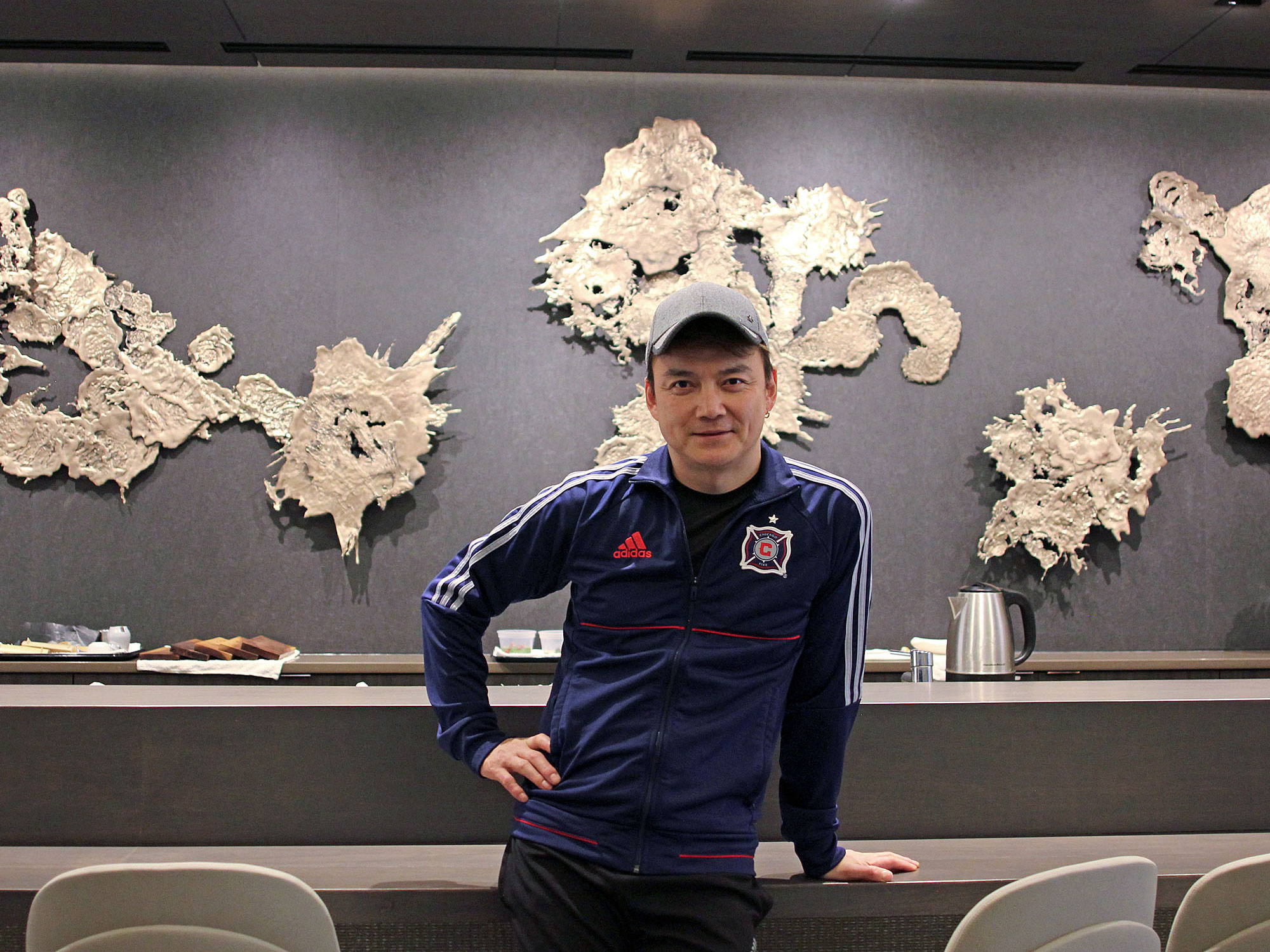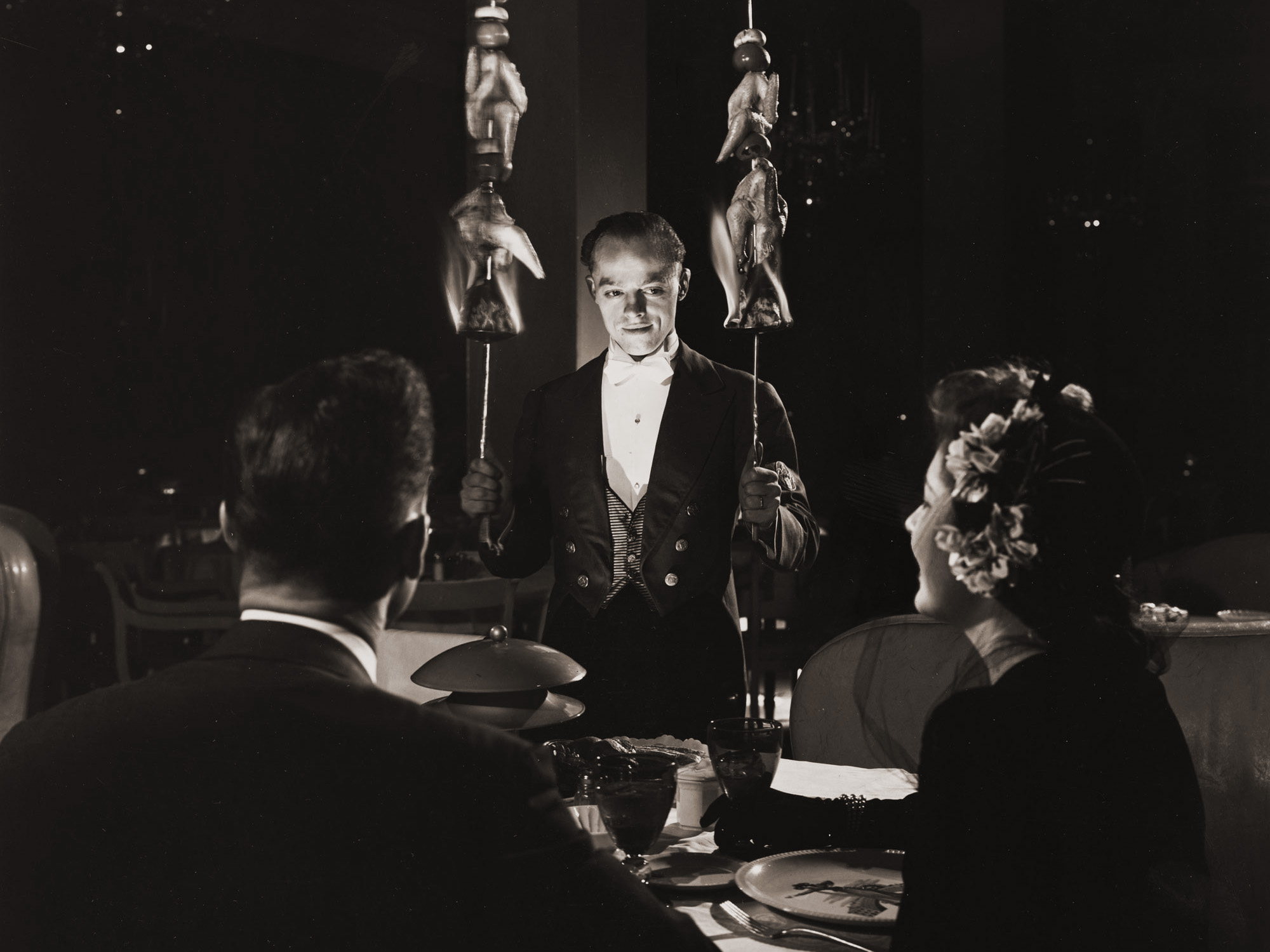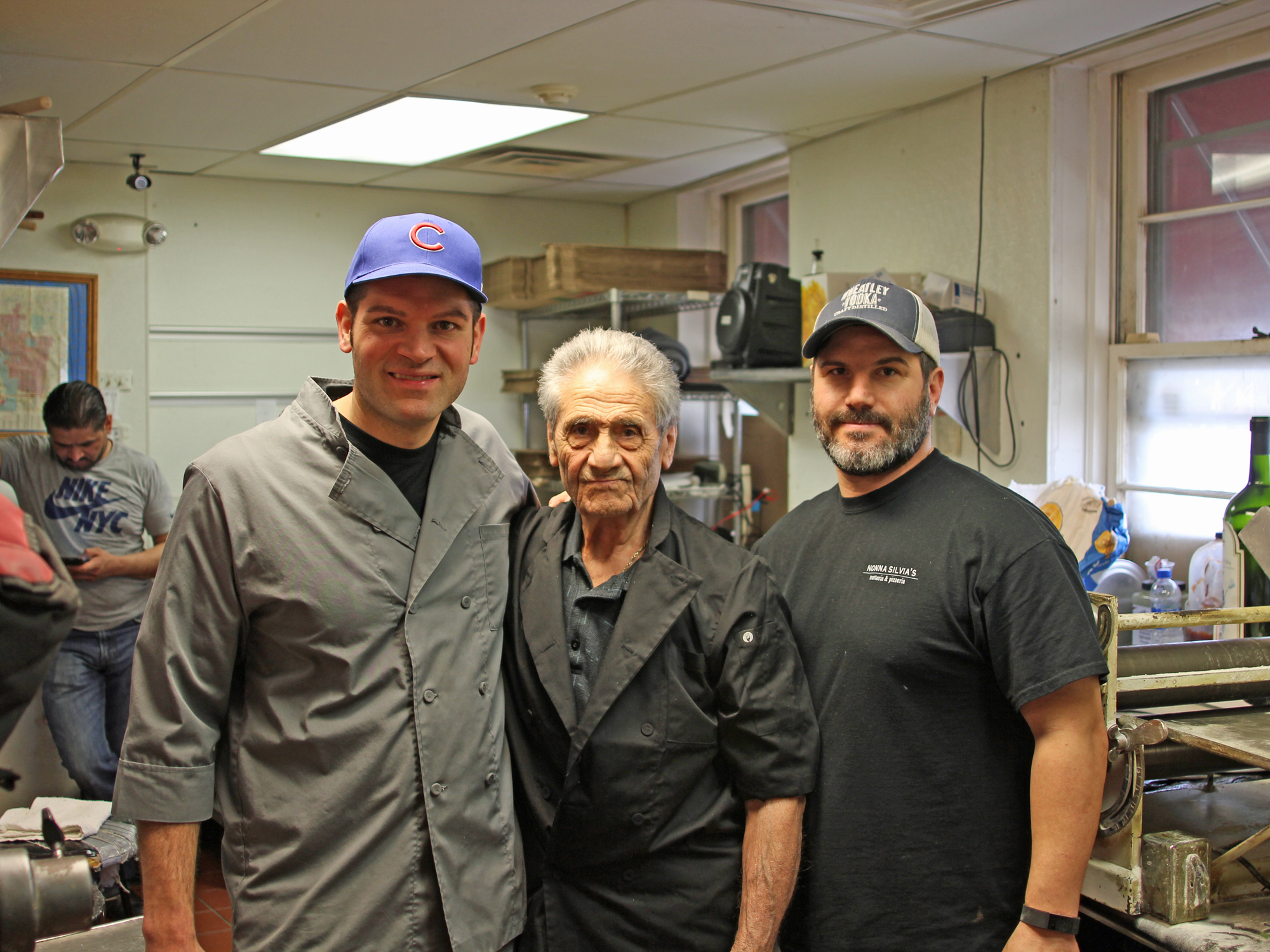I’M HAVING LUNCH WITH A BRIDGEPORT NATIVE at a family-run stand that just opened a few weeks ago. Every couple of minutes we’re paused briefly by someone who comes in and says hi to him, or he waves to someone he sees at another table with whom he went to De La Salle (the local Catholic high school, where the Daley boys all went).
“That’s how it is in Bridgeport,” he says. “You know everybody, not just because they’re from the neighborhood, but by their parish—some are from St. Barbara’s, some from St. Anthony, or St. Jerome or St. Lucy.”
We’re here because the place is owned by his aunt and his cousins. And they’re not only experienced restaurateurs, they descend from Bridgeport restaurant royalty. The cousins’ grandmother was Concetta DeGrazia—the Connie of Connie’s Pizza, which started at 26th and Lowe. She and her husband sold Connie’s to another family back in the 1960s, and they’re actually the ones who had the connections to make Connie’s the deep dish pizza of city concessions like McCormick Place—but still. People remember who you came from in Bridgeport. DeGrazia—you mean, like Connie’s?
And the place we’re at today, Laura’s Pizza & Pasta, just in from the corner of Bridgeport at 35th and Ashland, is hoping to revive those kinds of memories on its own. The original Laura’s opened in 1976—named for one of the cousins, now Laura Desensi—and it lasted about a decade, a classic South Side stand. The day came that Laura’s father, Anthony DeGrazia Sr., was ready to sell. In the kind of coincidence that could only happen in Bridgeport, one of his employees had a motorcycle accident with… a Connie’s Pizza truck, and he used his settlement to buy the business. Eventually he sold it in turn—and another Bridgeport family is still serving pretty much the same food to this day as Fabulous Freddie’s Italian Eatery, at 31st and Union.
So you could say the concept is pretty much proven for reviving Laura’s. What’s 30 years between neighbors?
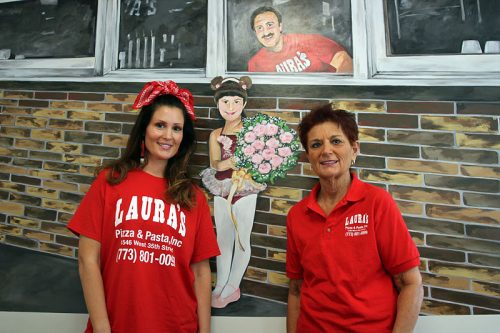
LAURA AND HER MOM, LORETTA DEGRAZIA, POSE in front of a mural that decorates the otherwise stark white dining room. It’s taken from an actual 1981 photo of the old Laura’s stand, with Laura posing in front of her father, who passed away in 2000. “This was my dance recital,” Laura says. “And my dad was always working, so I had to go see him at the stand.”
Loretta is the president and the driver behind the revived Laura’s; Laura, as the namesake, comes in from the suburbs to represent the business; and her brother Anthony Jr. has been in charge of menu development. He sits down at our table, and I ask him about the original Laura’s.
He nods to his dad in the mural and says, “We kind of wanted to have his presence in the place. It was a small place, hot dogs and Italian beef and so on. But 40 years later, there’s a zillion beef joints and hot dog joints, so that’s why we wanted to add more to the menu.”
I want to dig into that, but first, I want to order something to eat. I ask Anthony what he thinks I should have, and he points me to an item I haven’t seen before in Chicago—a Philadelphia-style roast pork sandwich. I ask him how it wound up on the menu.
“We wanted to create some sandwiches that weren’t what you’d find at your typical beef stand,” he explains. “The pork is brined 24 hours in the cooler, then we slow roast it. It’s kind of like pulled pork, but more garlicky seasoning. The sharp provolone and broccoli rabe is a perfect fit, it’s got that little bitterness to it. I don’t know of any other restaurant that has this in Chicago.”
I ask where he got the idea—did someone in the family come from Philly? “That sandwich caught my eye on the Food Network,” he says.
The breaded steak sandwich—the most iconic Bridgeport dish, a food you’ll find advertised on signage in this neighborhood and nowhere else—is made freshly and then pan-fried by hand, of course.
Well, it’s safe to say that nobody at the original Laura’s got ideas of what to serve off TV. In any case, it’s terrific—a classic Italian blend of sharp and earthy flavors, almost austere in its restraint. It has a subtlety you wouldn’t expect to find in a place whose menu leads with the trinity of hot dogs, hamburgers and pizza. But Anthony knows that the menu has to start with the basics to get them in the door, and then go beyond them to keep them coming back.
“We opened this place with the vision to recreate what we had before, with a little more diversity to the menu,” he explains. “I have at least 6 or 7 sandwiches that no one’s got in a place like this. If you try our pastas, it’s similar to what you’re going to get in a downtown restaurant, if not better.”
“We’re trying to do little things,” he says. “Like instead of cheese sticks that you just drop in the deep fryer, we hand-bread fresh mozzarella balls, cut in half, and we pan fry them and then drop them in the oven. It’s the same way we do our steak sandwiches, chicken sandwiches—pan fried in olive oil, then we finish them in the oven with red sauce and cheese.”

Anthony DeGrazia Jr.
The mention of pan-frying reveals a subject on which Anthony is passionate. Those long menus at stands like this are usually made possible by a freezer full of frozen items waiting to go in a fryer. Not here—there’s just one small freezer, and the only thing it has in it is French fries.
“You can’t just throw everything in a deep fryer and mix it all together, it tastes terrible,” he says. So the breaded steak sandwich—the most iconic Bridgeport dish, a food you’ll find advertised on signage in this neighborhood and nowhere else in the city—is made freshly and then pan-fried by hand, of course. “We take the Italian seasoning and mix it with panko bread crumbs, parsley and flour and egg, and we pan-fry it and then finish it in the oven. We do a ten-ounce piece of ribeye, and we don’t pound it out so it looks gigantic. We tenderize it a little bit, it looks a little smaller than others, but every bite is a nice thick bite of steak.”
“The arancini balls are made from scratch, with a traditional beef ragu—I don’t know anybody who makes the arborio risotto and does it all from scratch,” he says. “The beef ragu is a traditional Sunday gravy. We make big chunks of pot roast, three times a week. We have a natural gravy pot roast sandwich, and then we take that to a step two with the Nonna’s Gravy, we make a tomato sauce out of the pot roast.” I can believe it’s the real Nonna’s deal when I see it—it has the deep umber color of meatiness on top of tomatoes. (And you know who his Nonna was, right?)
Gallery: Modern Italian-American Classics at Laura’s
BRIDGEPORT IS CHANGING, SOME WOULD SAY. It has hipper restaurants now, in the likes of The Duck Inn and Kimski and an Antique Taco. It’s heating up as a real estate market for its proximity to downtown—something Anthony, who has been a real estate developer in the area and lived through both booms and the bust of 2008, knows well. “Development’s hard—my whole life, I’ve either had more money than I know what to do with or I’m broke,” he laughs. He’s also had hot dog stands along the way—actually, his first job as a kid was, what else, hawking hot dogs at Comiskey Park. And at the moment he likes the idea of a regular business with regular customers and regular cash flow—and family all around.
I ask if they thought about trying to launch something with more of the hipness factor. “I think we’ve lost a lot of tradition, a lot of old school ways,” he says. “I mean, those places are great, I like all the places you mentioned, but people sometimes just want some good Italian comfort food. They just want a plate of pasta. The same way we cook at home is the way we created the recipes here.”
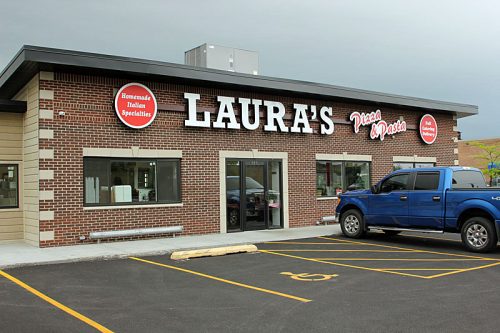
But not the same way that restaurants have tended to do it lately. In reviving a restaurant from the 1980s, the DeGrazias are really bringing back cooking from the 1940s, or even earlier, before Sysco trucks full of premade convenience foods. (The truck that delivers here is from Greco and Sons, a Chicago wholesaler specializing in Italian ingredients, like the fresh mozzarella they bread and fry.) And the fact is, less than a mile away from the hipper spots, this is another Bridgeport, on the edge of the Central Manufacturing District, a blue collar zone with lots of workers and few restaurant choices.
“There’s so many people that work around here—right next door there’s Pepsi, there’s 400 workers. We have Tripp-Lite down the street, there’s a Com Ed training center, and there’s probably 3000 city workers—that’s our clientele,” Anthony says. “They know good food and they’re sick of fast food options, and they can spend a little. We couldn’t be the cheapest because of the ingredients we’re using. But most of the things we have, it’s because a guy’s working hard all day long, he wants a good hearty meal. So we have things like the meatloaf with mashed potatoes and peas.”
“Everyone’s been coming back. We’ve got people coming in for two meals a day sometimes, they come in for lunch and they come back at night with their families,” he says.
I ask if the neighborhood still has a strong Italian presence. “It’s mixed, but it’s a really great neighborhood. There’s still a lot of Italian, Irish, Croatian, Asian—it’s a big mix of everything. But there’s still a core Italian population.”
I notice, though, that the staff behind the counter, where his mom is supervising at the moment, seems to be mainly Latino. Bridgeport has a reputation for maintaining its traditional ethnic lines, but you can see it changing with Chinese and Mexican families if you drive around the area, and you see the change in the workforce here, too.
“I’ve got a decent mix. We hired all local people,” he explains. “We put a sign in the window and all our staff came from the residential area right around here. A lot of them were working in big name restaurants downtown, and didn’t want to travel. Two cooks worked at Rosebud, a couple were at Harry Caray’s, one was at Flo & Santos. They’re all from good restaurants and they know the basics, but we took a good month to cook and train them the way that I wanted to do it, so they get the consistency.”
So they could cook like Nonna, in other words.
This is the new Bridgeport, same as the old Bridgeport to judge by the food being served here, yet modernizing around the edges, sometimes becoming new by going back to the old ways. Loretta comes out to join her son at our table; it was really her plan to bring back Laura’s, and so I ask her why she wanted to get back in the restaurant game, thirty years after her late husband sold the original.
“We’ve been in it for so many years. We like it, we like the food business. We like customer service,” she says, “And we want to serve the neighborhood. We get quite a lot of our old customers, who remember us from the 80s. And we have a lot of new people, from this area and west of Ashland. We’re serving people from all different backgrounds, and our main thing is giving people homemade food, a comfortable atmosphere, and a happy place to be.”
Michael Gebert is Da Boss of Fooditor.
Latest
Join the Discussion
After you comment, click Post. If you're not already logged in you will be asked to log in or register with Disqus.











